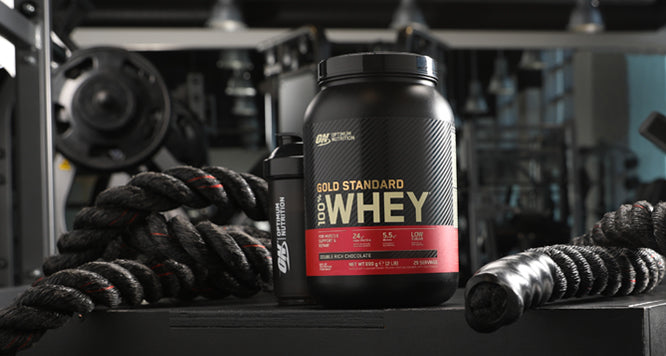Why Take Protein?
It is recommended that athletes consume a daily protein intake of between 1.4-2.3g per kg body weight depending on their training goals. An athlete whose goal is to increase lean muscle mass should consume protein more towards the upper end of the scale as they need more to repair and facilitate the growth of new muscle. Whereas an endurance or team sports athlete may not need as much but still need increased amounts to support training particularly during intense training blocks. Regardless of your specific training goal it is important to consume a protein high in essential amino acids particularly branch chain amino acids (BCAAs); leucine, isoleucine and valine. The BCAAs switch on the muscles ability to build and repair muscle enhancing training adaptations.
Whey Protein
The process of making whey protein begins on the farm with cow’s milk. Milk contains 3% protein of which 20% is whey protein and 80% is casein. These two sources of protein, which differ in structure and composition can be isolated from milk and made into a concentrated powdered form which can be mixed with milk or water to produce a protein-rich drink.
Whey protein is rapidly digested, meaning that it can kick start muscle protein synthesis soon after intake. Liquid whey, which remains after the cheese-making process is rarely used as a food or ingredient but undergoes a number of manufacturing processes to purify it into three separate stages to produce whey protein concentrate (WPC), whey protein isolate (WPI) and hydrolysed whey protein isolate (HWP).
Whey Protein Concentrate
Whey protein concentrate is filtered to remove a large portion of the lactose and fat. The majority of WPCs are 35-80% of total weight (usually expressed as g/100g serving). The remaining amount of the protein concentrate is made up of carbohydrates and fats that were unable to be removed through the filtration process. This is highly concentrated compared to the 10-20% that is observed with regular whey.
Whey Protein Isolate
Whey and/or concentrate can be further processed to make an even purer whey protein source, WPI. Both grades undergo longer filtration removing a large majority of the carbohydrates and fats. As a result WPIs are usually ≥ 90% of total weight concentrated protein. Whey protein isolate is a purer form of protein as it contains more protein per serving than WPC.
Hydrolysed Whey Protein
Whey protein can also be processed into HWP. This is where the whole protein has been ‘chopped’ up into smaller parts, known as peptides. These peptides are easier to digest allowing for fast absorption into the bloodstream. Additionally, the protein source is filtered to remove even more of the lactose and fat. This eventually leaves a protein source that is 90-95% pure protein.
Take-Home Message
Each form of the above-detailed whey protein is rich in essential amino acids particularly the BCAAs which are delivered to the muscle fast after exercise. This type of protein is, therefore, a superior choice before or after training to promote the growth, repair and recovery of the muscle and maximising training adaptations.
Now you know the science – time to give the World’s number 1 selling whey protein powder a try: OPTIMUM NUTRITION GOLD STANDARD 100% WHEY PROTEIN






